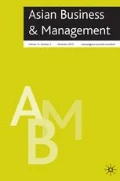Abstract
In 2008, world attention focused on the global food crisis and, as a consequence, on global food security. Although food prices had dropped substantially by mid-2009, most remain at or above past trend levels. Of all cereals, rice has a strategic importance, with its production and consumption being concentrated in Asia. Consequently, it is, and has been, subject to a host of policy intervention measures that have placed it among the most distorted of all agricultural commodity markets. Responses to the 2008 food crises included export policies, the removal or reduction of import duties and taxes on food commodities, and various producer and consumer support measures. In particular, policies in favour of consumers have been motivated by the need to shelter vulnerable income groups from threatening rising poverty levels. Policies have therefore tended to be ‘sustainable’, in that they have helped shape socially responsible strategies by principal actors (such as traders) in these markets, whether public or private. Towards exploring how socially embedded government policies can serve as benchmarks for private corporations’ future strategies in the rice market, this article outlines the market's characteristics and compares policies adopted in Asia and the European Union from an economic and social perspective.





Similar content being viewed by others
Notes
In our data analysis, we selected Thai white rice ‘5 per cent Broken’, a well-known product in international markets.
Italy is the EU's main producer.
An export subsidy reduces the price paid by foreign importers, which implies that domestic consumers pay more than foreign consumers. This is in contrast to taxes, bans and quotas, which involve a very high level of distortion that tends to reduce prices in the domestic market. However, by reducing the gains for producers, these policies limit their longer-term supply response. Moreover, by curtailing exports, they tend to increase prices on international markets.
If not well administered, input subsidies may also lead to an increase in input prices as demand for inputs increases, thus benefiting input suppliers more than agricultural producers.
In the case of major exporters, such as the EU, it may also have a significant dampening effect on international prices.
Although not every data point is available for the entire period of time, E-Views automatically adjusts the sample, considering only the period of time for which all time series are simultaneously available.
The short-run regression utilises the first difference of the variables. For this reason, an observation is missing (the first) and the sample is adjusted without the missing data. A Newey-West HAC Standard Errors & Covariance (lag truncation=4) estimator allows consistent estimates of standard errors with respect auto-correlation and heteroscedastic effects.
The long-run equation is not a spurious regression. All the variables that enter in the equation are integrated of order one. Nevertheless, the ADF test on the residuals of this equation rejects the presence of unit roots, so that all variables in the model are co-integrated, that is, the regression coefficients are meaningful and can be interpreted as long-run coefficients.
The first futures exchange market was the Dōjima Rice Exchange in Japan in the 1730s, to meet the needs of samurai who, being paid in rice, could convert their rice into coinage.
Source: USDA.
References
EC. (2003) On the common organisation of the market in rice. European Council Regulation (EC) 1785/2003, 29 September, http://eur-lex.europa.eu/LexUriServ/site/en/consleg/2003/R/02003R1785-20060701-en.pdf, accessed 5 December 2011.
EC. (2006) Amending Regulation (EC) 1785/2003 as regards arrangements for importing rice. European Council Regulation (EC) 797/2006, 22 May, http://eur-lex.europa.eu/LexUriServ/LexUriServ.do?uri=CELEX:32006R0797:EN:HTML, accessed 5 January 2012.
Fang, C. (2009) How China stabilised grain prices during the global price crisis: Lessons learned. Paper presented at the workshop ‘Rice Policies in Asia’; 10–12 February, Chiang Mai, Thailand.
FAO. (2009) The State of the Agricultural Commodity Market. Rome, Italy: Food Agriculture Organisation.
IFRI. (2008) Biofuels and Grain Prices: Impacts and Policy Responses. Paris, France: Institut Français des Relations Internationales.
Khush, G. and Toenniessen, G. (eds.) (1991) Rice Biotechnology. Manila, Philippines: International Rice Research Institute, Biotechnology in Agriculture No. 6.
Kutas, G., Lindberg, C. and Steenblik, R. (2007) Biofuels: At what cost? Government support for ethanol and biodiesel in the European Union. Report for International Institute for Sustainable Development, Geneva, http://www.iisd.org/gsi/sites/default/files/oecdbiofuels.pdf, accessed 20 November 2011.
Mitchell, D. (2008) A Note On Rising Food Prices. Washington DC: World Bank: Policy Research Working Paper 4682.
Pace, N., Seal, A. and Costello, A. (2008) Food commodity derivatives: A new cause of malnutrition? Lancet 371 (17): 1648–1650.
Robles, M., Torero, M. and von Braun, J. (2009) When speculation matters. IFPRI (International Food Policy Research Institute) Issue Brief 57, http://www.ifpri.org/sites/default/files/publications/ib57.pdf, accessed 20 December 2011.
Slayton, T. (2009) Rice crisis forensics: How Asian Governments Carelessly Set The World Rice Market On Fire. Washington DC: Centre for Global Development: Working Paper 163.
Timmer, P.C. (2009) Did Speculation Affect World Rice Prices? Rome: Food Agriculture Organisation: ESA Working Paper 09-07.
Author information
Authors and Affiliations
Corresponding author
Rights and permissions
About this article
Cite this article
Zolin, M., Andreosso-O'Callaghan, B. Rice price volatility: Sustainable policies in Asia and Europe. Asian Bus Manage 11, 251–271 (2012). https://doi.org/10.1057/abm.2012.10
Received:
Revised:
Accepted:
Published:
Issue Date:
DOI: https://doi.org/10.1057/abm.2012.10




